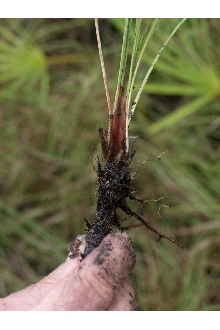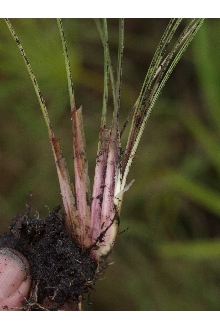Coleataenia abscissa (Swallen) LeBlond
Scientific Name: Coleataenia abscissa (Swallen) LeBlond

| General Information | |
|---|---|
| Usda Symbol | COAB |
| Group | Monocot |
| Life Cycle | Perennial |
| Growth Habits | Graminoid |
| Native Locations | COAB |
Plant Guide
Use soil moisture sensors to measure the soil moisture of Coleataenia abscissa (Swallen) LeBlond.
Fact Sheet
Alternate Names
Cutthroatgrass
Uses
Cattle graze cutthroat grass all year. Deer graze it in the spring.
Status
Please consult the PLANTS Web site and your State Department of Natural Resources for this plant’s current status, such as, state noxious status and wetland indicator values.
Description
Grass Family (Poaceae), Use soil moisture sensors to measure the soil moisture of Coleataenia abscissa (Swallen) LeBlond., Cutthroat grass is native, warm-season, robust, rhizomatous perennial, The height ranges from 2 to 4 feet, The leaf blade has a narrow keel from 16 to 18 inches long and is twisted when dry, The leaf sheath is mostly basal and overlapping, keeled, wide, and cuts back sharply at collar, The ligule has a membrane about 1/32 inches long, The seedhead is an open purple panicle 8 to 10 inches long, Distribution: For current distribution, please consult the Plant Profile page for this species on the PLANTS Web site,
Management
Livestock that graze it in the winter must be fed a complete mineral and protein supplement. Deferred grazing every few years during the spring for at least 90 days keeps this grass vigorous and productive. Occasional controlled burning eliminates unused material. New growth following a burn is excellent forage.
Establishment
Growth starts in January, but little foliage is produced until March, April, and May. It regrows well after spring grazing. The seedheads appear in June with seed ripening in late July and early August. It reproduces primarily from robust, thick rhizomes. It grows well in 35- to 40-percent shade and only on strongly acid, seepy, sandy sites. Cultivars, Improved and Selected Materials (and area of origin) Please contact your local NRCS Field Office.


